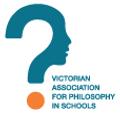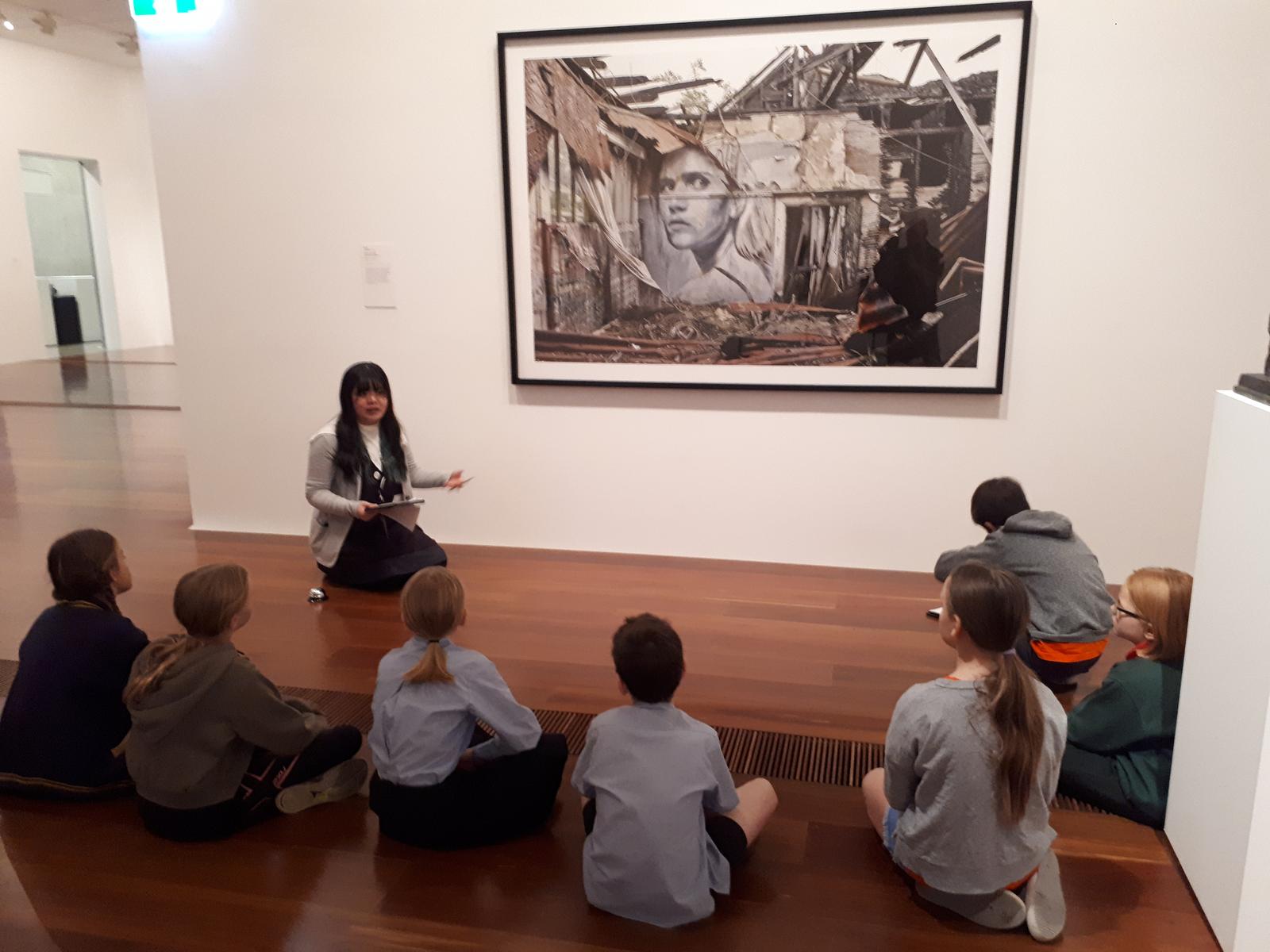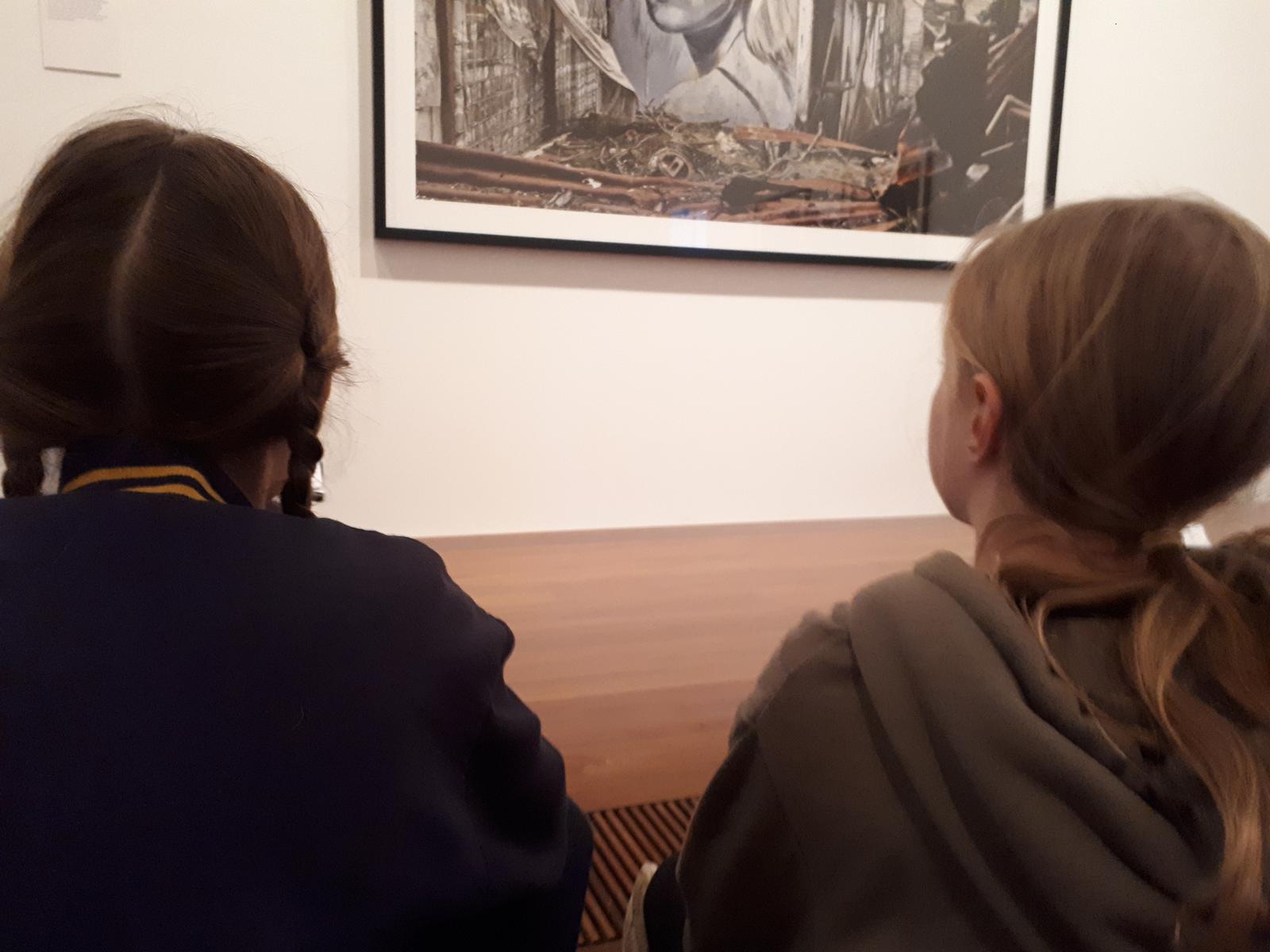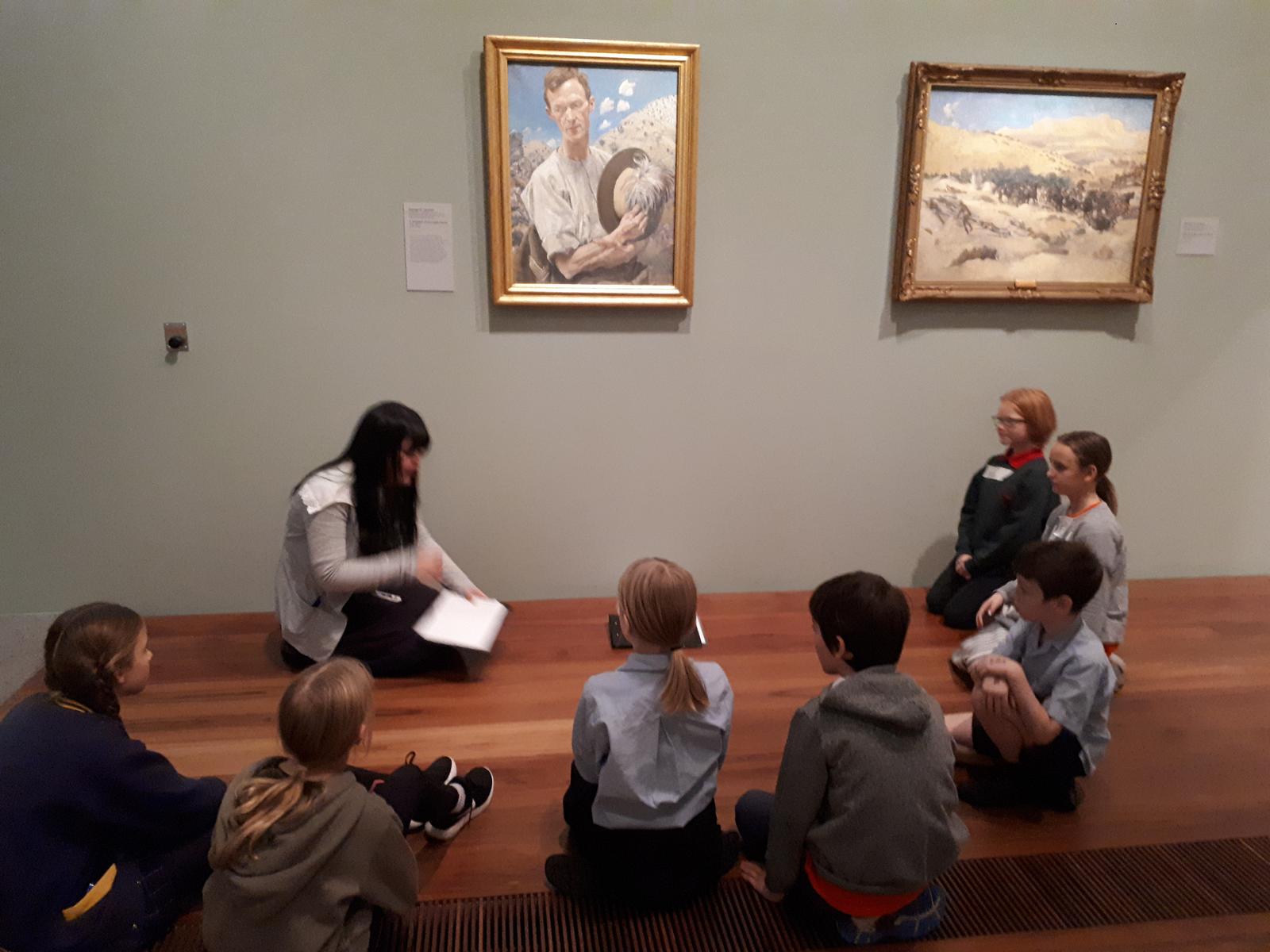Primary Philosothon
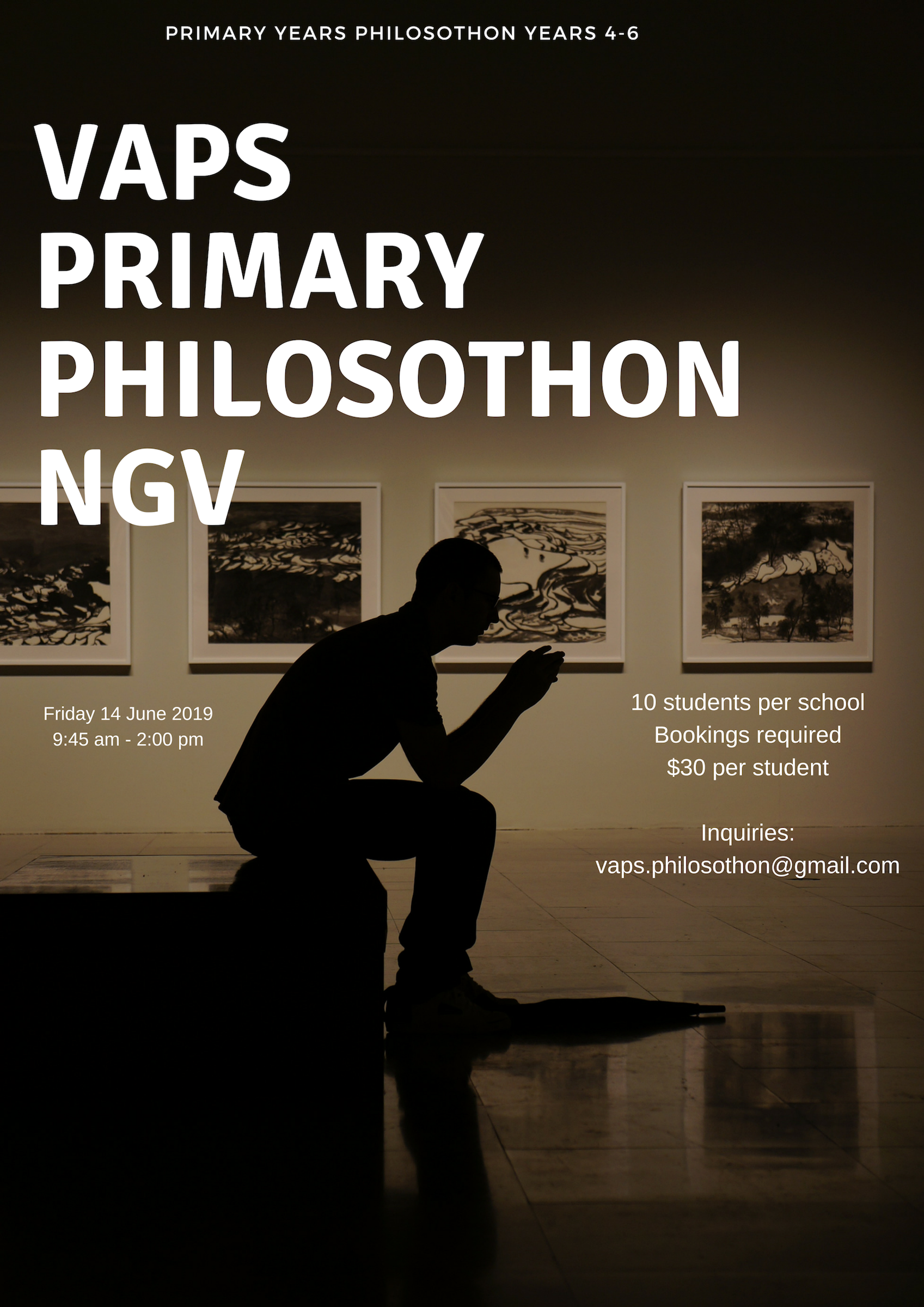
Primary Philosothons at NGV Recap
On 14th June, VAPS partnered with the National Gallery of Victoria to deliver our Primary Years Philosothon, now in its 7th year. 120 students in years 3 to 6 from 12 different schools came together to collaborate philosophically.
Students from different schools were grouped together and walked around to three chosen artworks. At each site, a group of ten students and a facilitator participated in a philosophical community of inquiry about the big ideas that students were struck by in the artwork.
After the three communities of inquiry, students returned to their school groups for a debrief and to collect all the ideas each student had been discussing in their various philosothon groups.
Please see our philosothons page for other upcoming philosothons, including how to register students or to participate as a facilitator.
Moonee Ponds West PS - Our First Philosothon
Students in years 3 & 4 from Moonee Ponds West Primary School participated in their very first philosothon experience. These ten students were generous enough to provide us with feedback.
Hi, I’m Samuel. Hi, I’m Charlie.
We looked at some sculptures of people that were black all over. They were coloured black and then covered in black rope. It looked creepy. We talked about sustainability and how the creator re-used ropes to create the art instead of throwing them away. We also talked about their genders and we talked about how the sculptures made us feel. It made us feel creeped out! There were two people, the one relaxing was male, and the one standing in action was female. We thought about why this might be.
Hi, I’m Clem, and I’m Michael.
We saw an artwork of the Olympic Games when people were being discriminated against because of the colour of their skin. We discussed who gets to make the rights that people have. The Olympic Games was one of the only racially neutral things in history, because people all over the world could compete. But unfortunately, sometimes the athletes were discriminated against based on the colour of their skin, and that’s what the artwork we saw was based on. Nowadays, the system is updated and everyone gets a fair go. We went on to discuss who gets to make these rules and laws, and thought about if the government should make the rules that we all have to follow.
Hi, I’m Ellie and I’m Meiya.
We got to see three different kinds of paintings and we are going to tell you about what we discussed. We were at our last painting. We sat in a circle around the painting when a lady told us she was the artist. We had a big conversation about the painting. We all thought it could have something to do with feelings and emotions. When we were finished, the artist Rosaline told us she was inspired by a flower. We thought about how the artist would be feeling as she was inspired by the flower.
Hi, I’m Emily. Hi, I’m Olivia.
One of our paintings was a portrait of a man looking down a hill. Our discussion was about friendship, and how we might know what the man in the painting was thinking. First, we talked about the qualities of being a friend. We decided the qualities of a friend are: loyalty, laughter, kindness, trust, honest, and generosity. We also talked about the difference between knowing someone, and being a friend with someone. We decided you can be friends with someone you just met, if you take the time to get to know them. Our third painting was a colourful painting. We discussed that the painting was showing different emotions. We also discussed that anger can sometimes be good, and sometimes be bad. And that it was hard to decide if an emotion was ever good or bad. We also discussed whether someone could feel different emotions at the same time, for example, happy and sad at the same time.
Hi, I’m Aleda and I’m Alannah.
At the NGV we saw a wonderful abstract artwork. We had a big philosophical discussion about what it meant and what it symbolised. The painting was very colourful. Some lines were straight and some were curved and looked like ripped paper. We discussed how the straight lines made us feel orderly and sensible. The curved lines made us feel free, creative, and imaginative. We concluded that sometimes you need to be orderly and sometimes you need to be free. That’s what we thought of when we looked at the painting.
We would like to thank the organisers of the philosothon. Thank you to the staff at the Victorian Association of Philosophy in Schools. And thank you to the staff at the National Gallery of Victoria.
We hope we get to go back soon!
